Class size refers to the ratio of students to teachers. Research has found that smaller class sizes are generally associated with better student outcomes, especially in elementary school. A famous Tennessee study in the 1980s found that elementary students in classes of 13-17 students achieved higher marks than those in larger classes. While the effects were smaller, smaller class sizes in middle and high school have also been linked to benefits like increased advanced coursework and lower dropout rates. However, larger class sizes allow schools to enroll more students and reduce costs. There is ongoing debate around the complex tradeoffs of class size and its impact on learning outcomes.
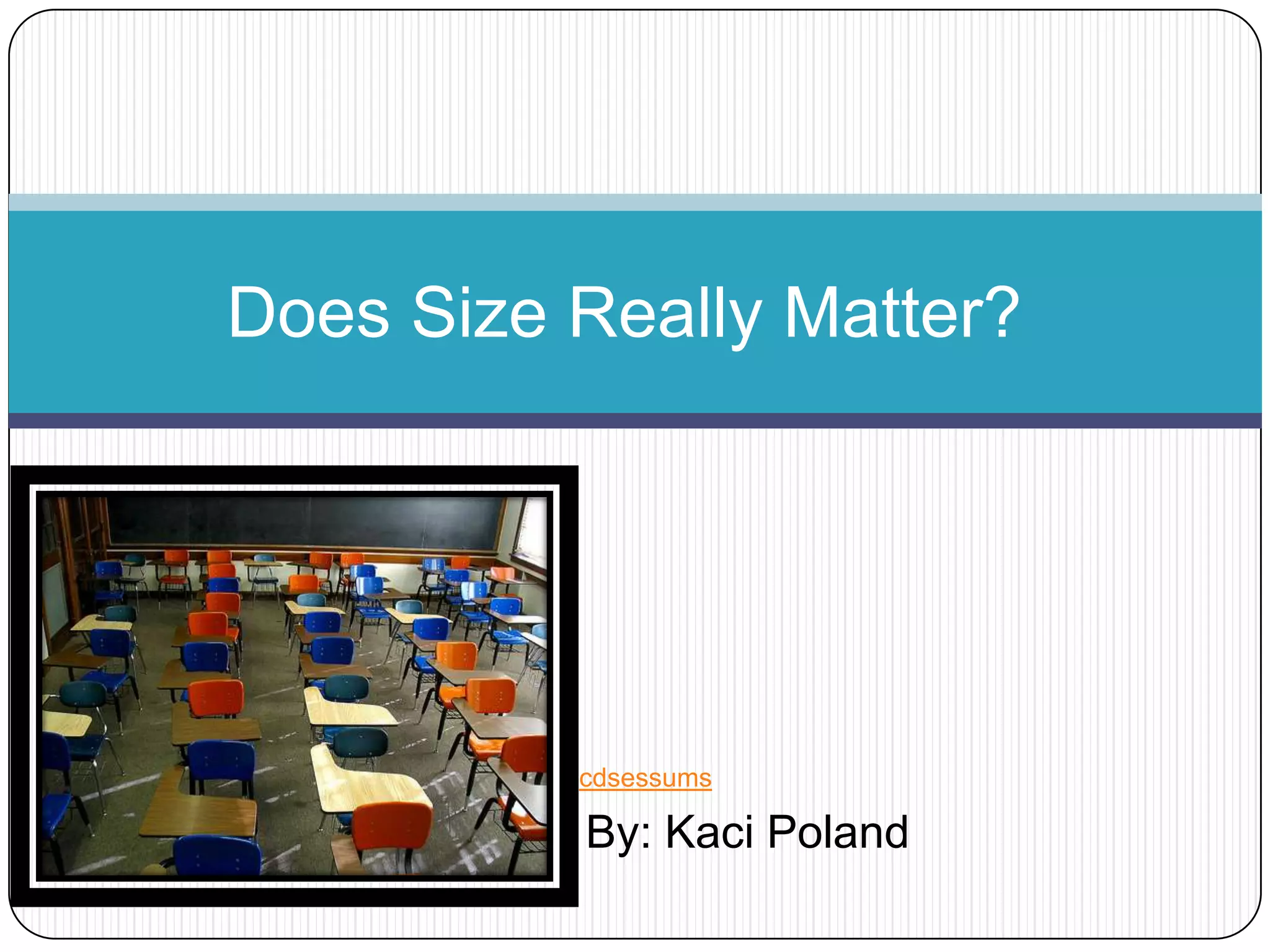






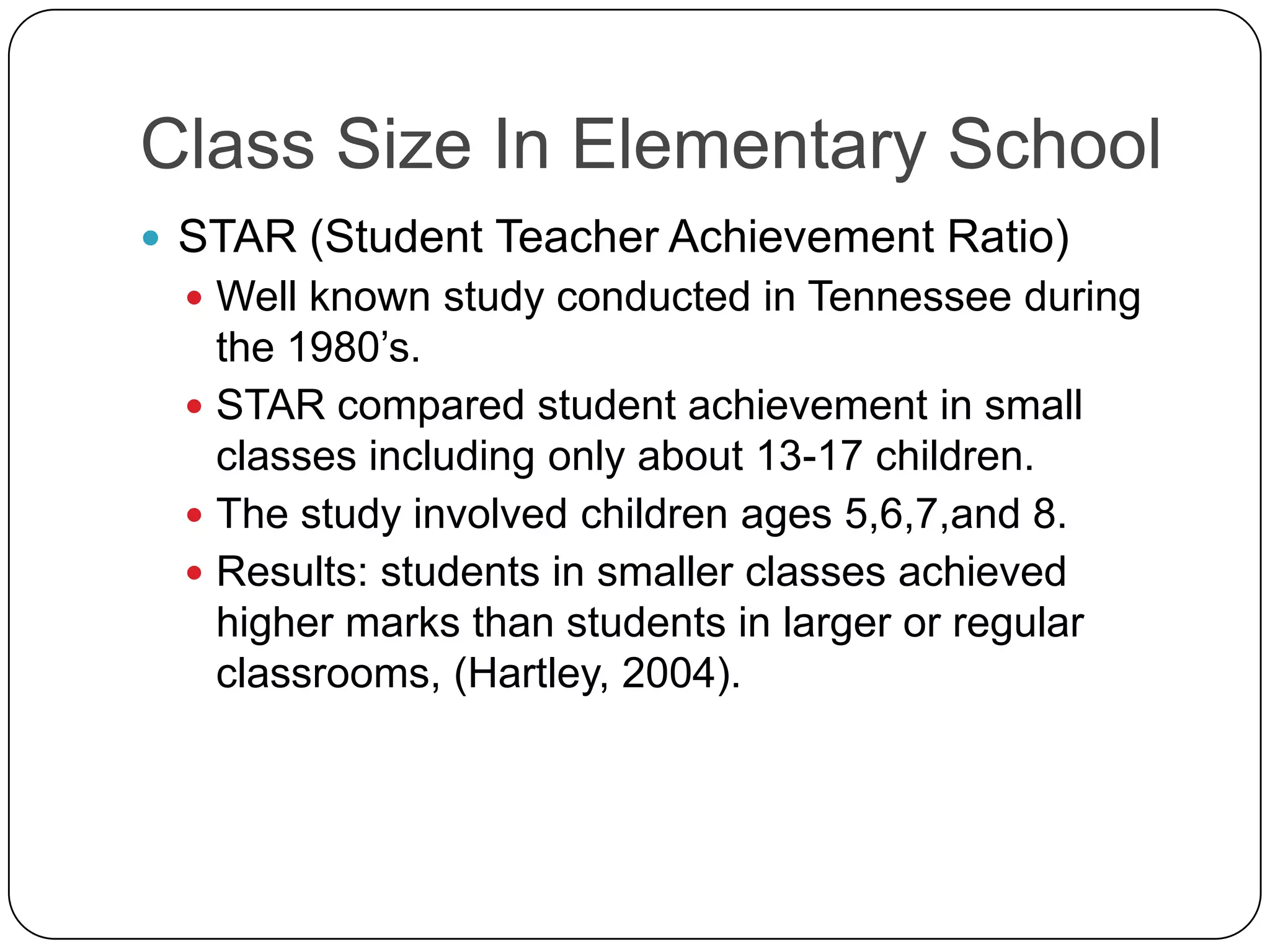

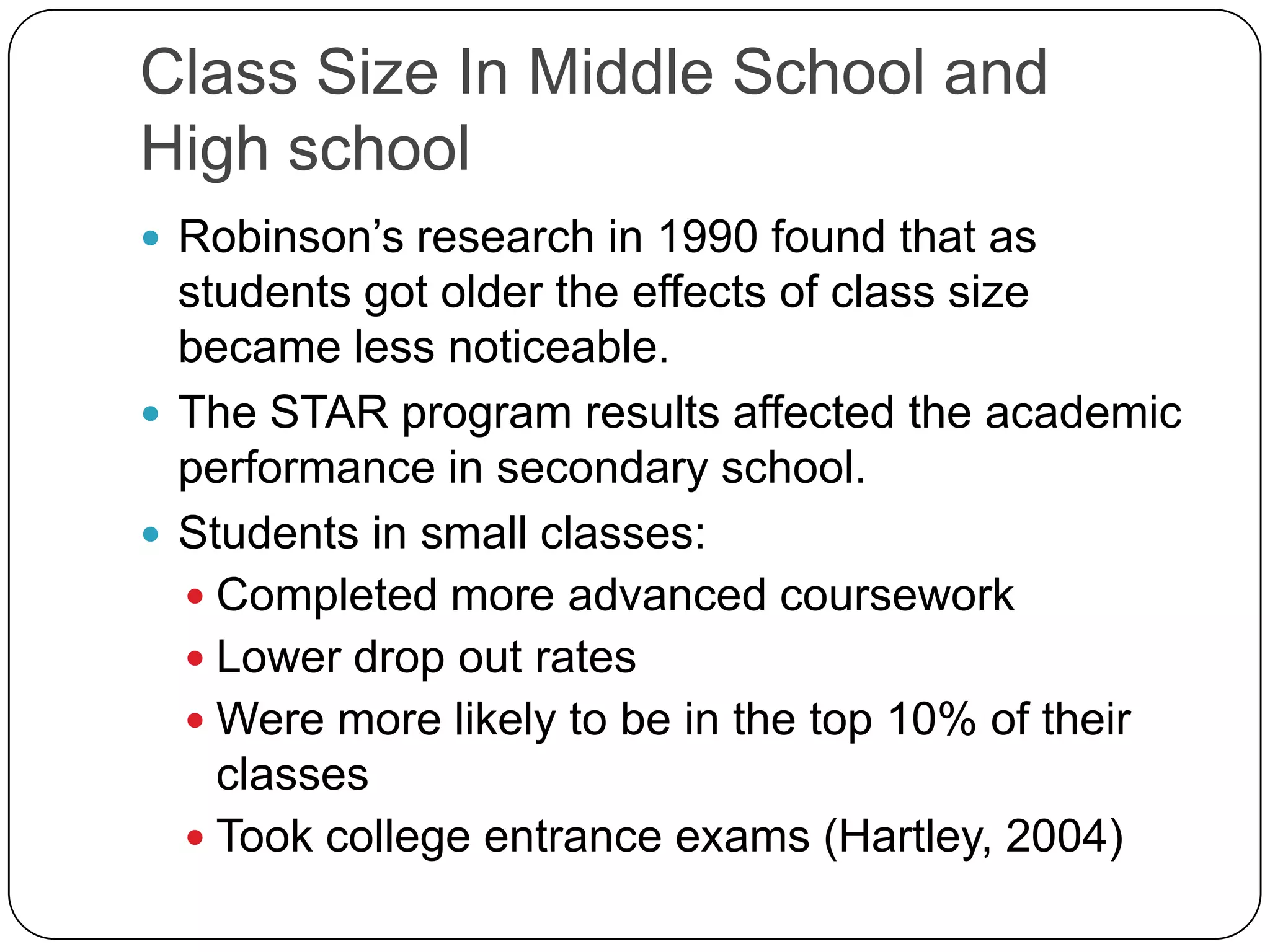
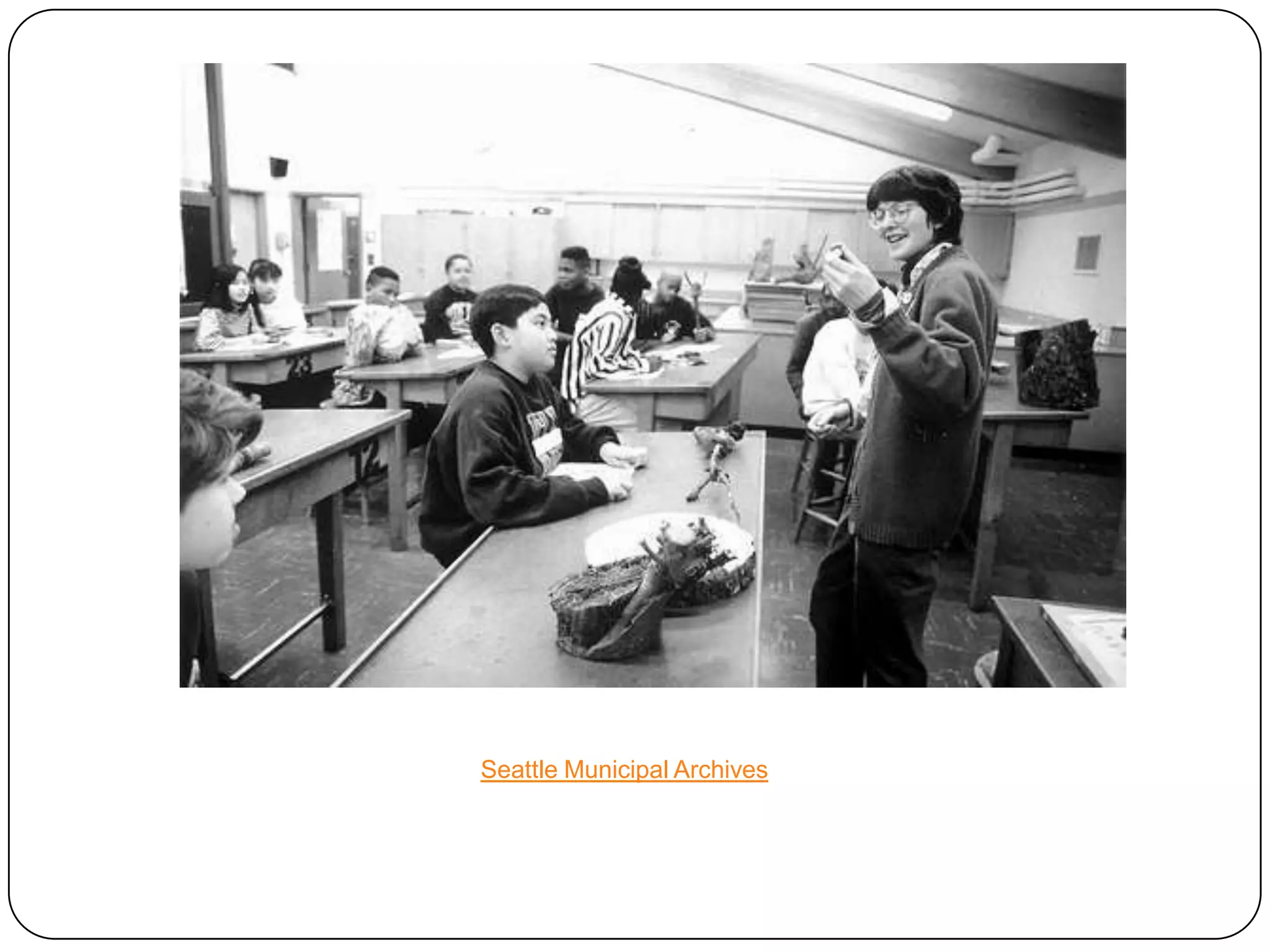
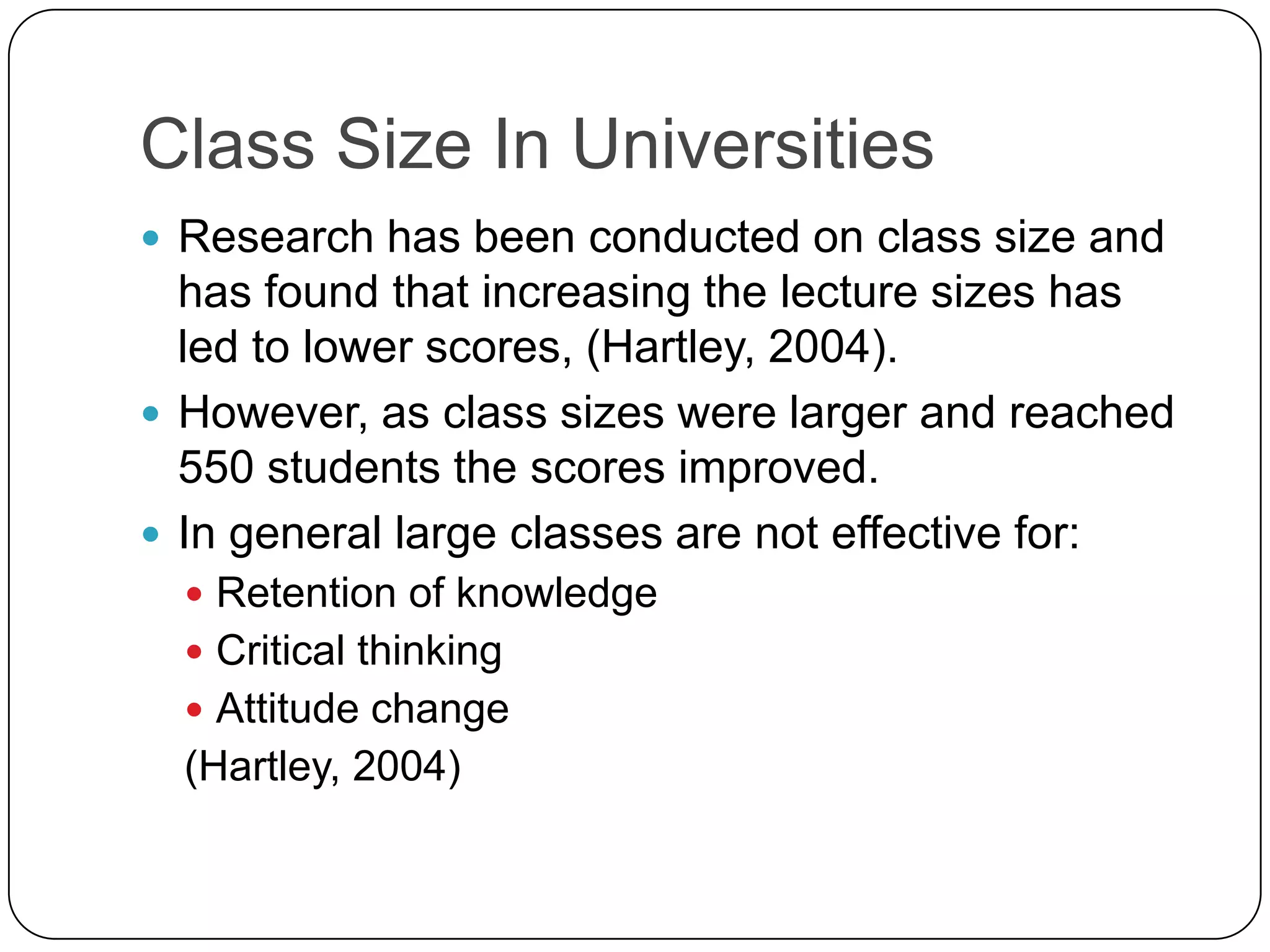

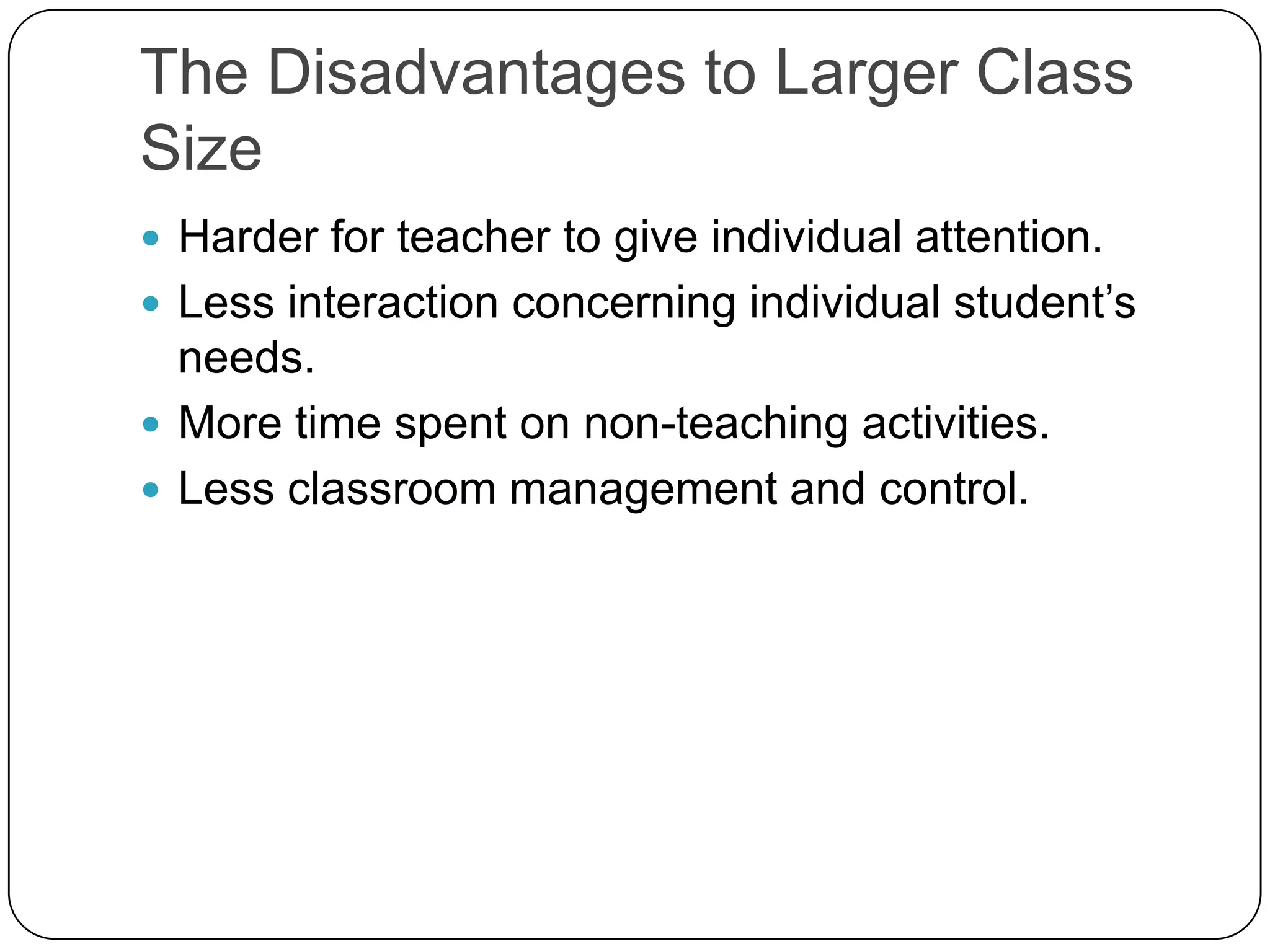
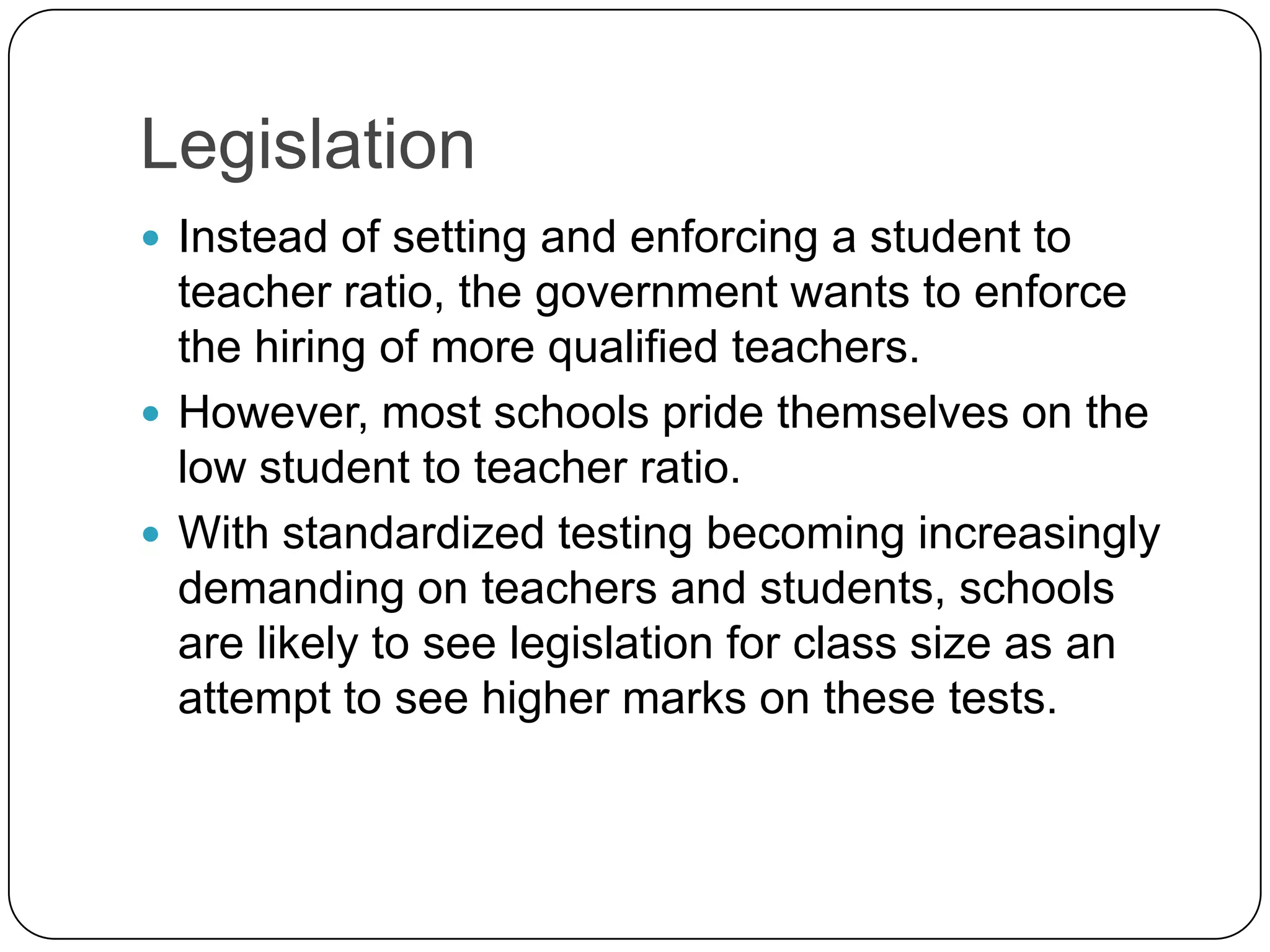

![Works Cited"Class Size Need Not Constrain Teaching." The Chronicle of Higher Education 56.06 (2009). General Reference Center Gold. Web. 23 Mar. 2010.Hartley, James. "Class size matters! James Hartley considers research into the effects of different class sizes on academic attainment at school and university." Psychology Review Nov. 2004: 27+. General Reference Center Gold. Web. 24 Mar. 2010."Smaller classes? Yes! (But ...). (Research corner: essentials on education data and analysis from research authority AEL)." District Administration 39.6 (2003): 66. General Reference Center Gold. Web. 24 Mar. 2010.Wilby, Peter. "Size isn't everything: why teachers may be wrong about this class issue." New Statesman [1996] 31 Mar. 2008: 16. General Reference Center Gold. Web. 24 Mar. 2010.Images- all were derived from the creative commons section of http://www.flickr.comhttp://www.flickr.com/photos/chicago2016/3277192438/http://www.flickr.com/photos/seattlemunicipalarchives/4112145057/http://www.flickr.com/photos/chicago2016/3277193678/sizes/l/http://www.flickr.com/photos/csessums/4389889668/](https://image.slidesharecdn.com/doessizereallymatter-100325094019-phpapp01/75/Does-Size-Really-Matter-17-2048.jpg)